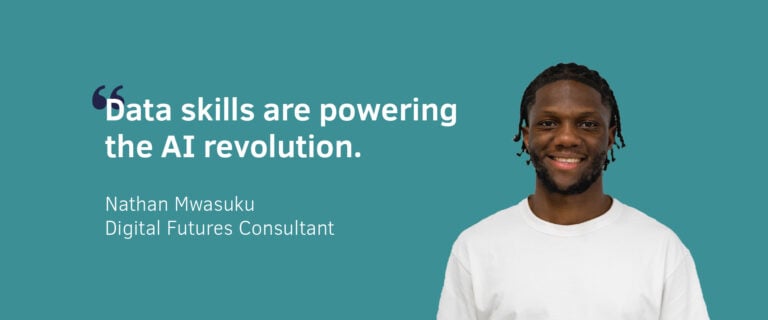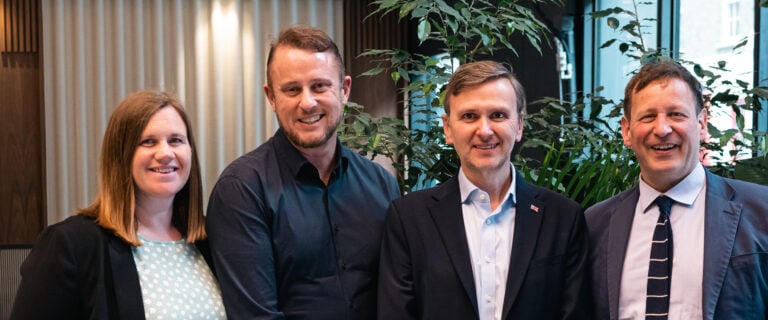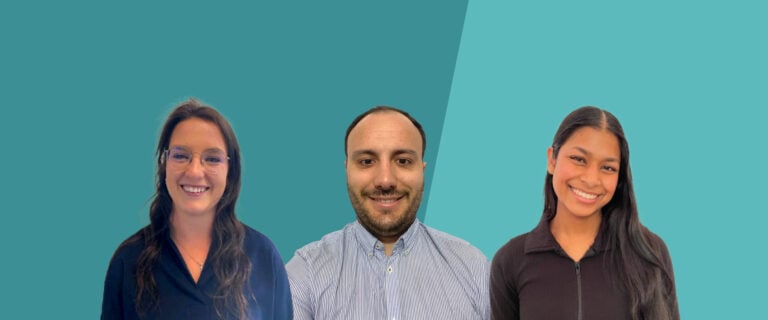
Digital Futures was in attendance at last week’s AWS re:Invent 2024 event in Las Vegas. AWS re:Invent is one of the largest professional tech events, with over 70,000 technologists from all over the globe attending the 2000 available sessions.
Ryan Pothecary, Lead Cloud Engineering Instructor, was amongst the attendees and shares some of his key insights and reflections from the week.
As I arrived to a very sunny Las Vegas, I felt particularly excited about this year’s AWS re:Invent and I certainly wasn’t disappointed. I knew it was going to be special. Perhaps most significantly, it was Matt Garmen’s first re:Invent since taking over as CEO from Adam Selipsky earlier this year.
Matt is no stranger to AWS having served as Head of the Compute and Storage divisions since AWS was launched but, with a new CEO, there was always going to be lot of anticipation for his keynote. For Matt’s first re:Invent keynote, the queue to enter Ballroom F at the Venetian was pretty extraordinary, starting from 6.00am before the space filled up incredibly quickly ahead of the 8.00am start. Matt’s keynote was reflective on his own journey with AWS, covering all the main milestones to becoming the number one cloud platform in the world over the last 20 years.

Outside of personal reflections, the CEO’s keynote is typically where new service releases are launched which is an exciting moment for all of us that work with AWS. Whilst Matt made a cautious start with a new generation of EC2 instance type, he quickly followed up with several additional releases.
The announcement of Amazon Aurora DSQL was probably the most noteworthy and exciting. We all know the challenges of running relational databases – they are difficult to scale and therefore the more users you have, the less performant the become. Amazon Aurora was always a great relational database service, compatible with MySQL and PostgreSQL, but built with regional cloud scale. Amazon Aurora DSQL takes this to the next level by taking a note out of Google’s Cloud Spanner service and making it completely multi-regional as well as 4x faster. This release could redefine how we look at relational databases and maybe slow down the move to non-relational services like Amazon DynamoDB or MongoDB.
There was also a flurry of releases around the brilliant AmazonQ Developer service. AmazonQ Developer Unit Test adheres to the discipline of test driven development, something we teach in our own Academies. There was also some welcome AmazonQ Developer agent focused on Mainframe and Microsoft.Net refactoring. One release that everyone would welcome is the ability for AmazonQ Developer to write documentation on how your code works for you.

Two of the most valuable benefits in attending a conference like AWS re:Invent is learning about technology and networking with others. It was wonderful to see how well Digital Futures was represented at this year’s re:Invent conference.
It was an absolute joy and privilege to have the opportunity to meet up with two of our own consultants, Suri Amir & Nathan Mwusuku. They both attended the full week of the conference by winning a place via the prestigious AWS All Builders Welcome grant, which provided both with life changing experiences.
When I caught up with Nathan, he said, “This has been the most incredible year for me, joining the Digital Futures data engineering pathway, winning a place at AWS re:Invent and now securing a placement with one of the largest insurance companies in the UK. This is all thanks to Digital Futures”.
Having taught both Suri and Nathan at the Digital Futures Academy, I felt incredibly inspired seeing them both at AWS re:Invent and seeing their journey from student to starting their career in technology.
Not on our email list? Sign up here to get the latest Digital Futures news, updates and tips.
Find our FAQs for careers in tech here.
Read more about our Data Engineering pathway.
Read more about our Data Analytics pathway.
Read more about our Digital Transformation pathway.





